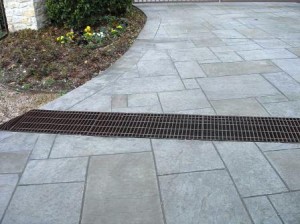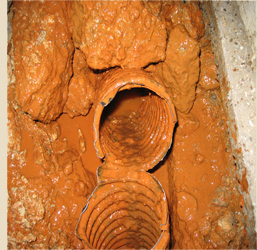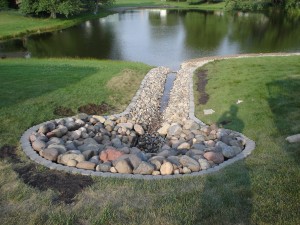Patio drainage for paver patios
When you plan a new paver patio, make sure you include a drainage system in the project. Proper drainage is very important as standing water can cause damage to your home’s foundation, provide a breeding ground for insects and pests and other unwelcome surprises. You can avoid all of this choosing the right way for water drainage.
Patio base
The base of a patio will allow water to drain beneath it. If you didn’t mortar each spot of the base, there will still be a weak spot of sand and many gravel that will permit the water to infiltrate, thus damaging the foundation over time. It is best you lay the gravel tight so that there won’t be any place for the water to go.
Patio slope
It is recommended you slope the base of the patio at an angle so that water will flow away from it. To be effective, tilt the base about 1/4th of an inch for each linear foot moved.
Patio drains
If water stays longer than it should, you might think about installing a patio drain and connect it to a pipe that leads to a ditch or sewer. You may think about installing a french drain at the end of the patio to carry out the water to where you want.
Using a dry-well
Constructing a dry-well will make draining easier. It can be combined with the French drain for more efficient results. The dry-well can be made out of a barrel filled with sand and gravel and can actually be installed under the patio base. If the patio is already constructed, and floods you may wanna think about starting the project all over again and do it right this time.

 The advantage of a deck drain is its water evacuating speed. Sometimes it can also contain chemi...
The advantage of a deck drain is its water evacuating speed. Sometimes it can also contain chemi... Suffering from limited lifespan, the French drain has it's disadvantages and is often not the be...
Suffering from limited lifespan, the French drain has it's disadvantages and is often not the be... A driveway drain system can be either a combined or a linear drainage system. Each drainage sys...
A driveway drain system can be either a combined or a linear drainage system. Each drainage sys... Storm water drainage system are specially made to divert the overflow of water from nature direc...
Storm water drainage system are specially made to divert the overflow of water from nature direc... There are three main systems for draining your basement: interior, exterior and base board syste...
There are three main systems for draining your basement: interior, exterior and base board syste... Not all basements are equipped with a drainage system. This can be a problem if you are planning...
Not all basements are equipped with a drainage system. This can be a problem if you are planning... There may be times when, after an excessive rain, you will encounter drainage problems. This may...
There may be times when, after an excessive rain, you will encounter drainage problems. This may... Basements can be used for other reasons than just depositing thing you do not use anymore. By fi...
Basements can be used for other reasons than just depositing thing you do not use anymore. By fi...














